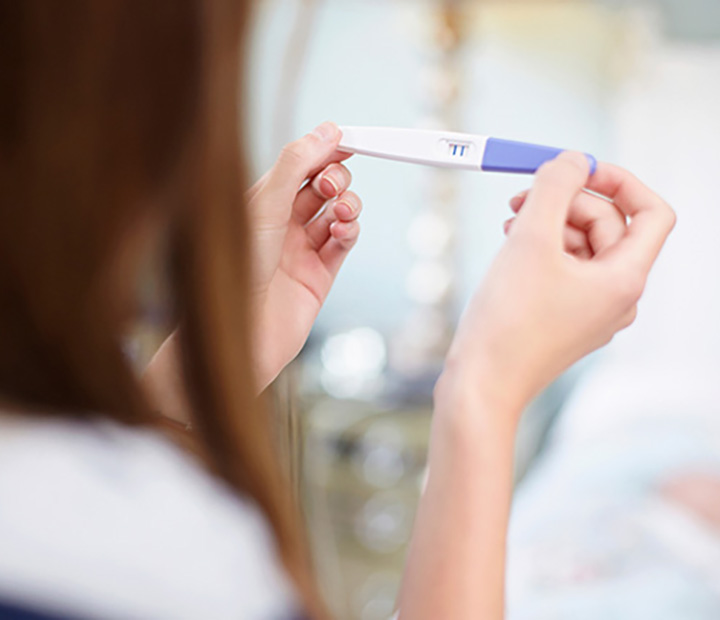
Pregnancy Discharge: When Is It Normal and What Do Different Colors Mean?
It may be an icky subject, but it’s one many pregnant people have on their minds. What exactly is going on “down there” with the discharge? In early pregnancy, your body may have increased vaginal discharge, and before labor begins you may notice a blood-tinged mucus discharge. Sometimes, your discharge may indicate a problem, like an infection. Read on to find out about the different types of discharge you might notice during pregnancy.
What Is Vaginal Discharge?
Vaginal discharge is a natural and normal occurrence for many women, serving the function of keeping the vagina clean, moist, and protected from infection. It typically consists of fluid and cells that are shed throughout the day. Typical discharge plays a vital role in maintaining vaginal health, and this discharge is often clear or whitish in color.
What Is Leukorrhea?
Leukorrhea is simply the medical term for all vaginal discharge, not just the discharge that occurs during pregnancy. It’s usually a clear or whitish mucus-like substance, and it starts to appear at puberty. The color, consistency, and amount of leukorrhea can vary depending on where you are in your menstrual cycle. Remember, during pregnancy you might be seeing more of it than usual, but this is normal.
RELATED PREGNANCY TOOL
Is It Normal to Have Vaginal Discharge in Pregnancy?
Are you wondering “Do you get discharge when pregnant?” or “Is it normal to have discharge while pregnant?” Yes, it’s completely normal to experience vaginal discharge during pregnancy. This is a common symptom experienced by pregnant women. As always, if there are any concerns about changes in vaginal discharge during pregnancy, consult with your healthcare provider.
What Does Normal Pregnancy Discharge Look Like?
What does normal early pregnancy discharge look and smell like? Normal discharge during pregnancy is clear, milky white, or slightly off-white and usually a bit sticky; it should not have a noticeable odor. It’s OK if your discharge looks a little yellow on your underwear or panty liner during pregnancy, too.
It’s common for pregnant people to ask, “Why do I have so much discharge while pregnant?” When you're pregnant, as your estrogen and progesterone hormone levels rise and blood flow to the vagina increases, you might find that you’re producing more discharge than before, especially during the second trimester. This actually helps to protect your growing baby from infection, as it’s your body’s natural way of keeping the vagina clean and flushing out dead cells. Once your pregnancy is full term (at 39 weeks of pregnancy), seeing a mucus-like discharge is also normal. This is the mucus plug, which is described below in more detail.
What Causes Vaginal Discharge During Pregnancy?
As mentioned above, vaginal discharge during pregnancy is the body’s response to increased hormone levels and blood flow to the vagina. This causes an increase in discharge which serves the essential role of protecting the birth canal and your baby from infection.
Is Vaginal Discharge a Sign of Pregnancy?
Vaginal discharge is generally not a sign that you're pregnant, but in the early days of pregnancy, you might notice some light spotting called implantation bleeding. This can happen when the fertilized egg implants in the uterine lining. During early pregnancy, this discharge is usually pink, a bit lighter in color than normal menstrual blood. If you’re curious to find out how much you know about the other early signs of pregnancy, take our quiz below.
Does Vaginal Discharge Change When You’re Pregnant?
It’s entirely normal to observe an increase in vaginal discharge during early pregnancy and throughout pregnancy, due to increased hormone levels. As the body prepares for childbirth, the volume of pregnancy discharge may further increase, often with slight variations in color and consistency. It’s important to stay informed about these natural bodily changes and consult your healthcare provider if you notice anything unusual. You can find out more about abnormal vaginal discharge below.
What Is Considered Abnormal Discharge?
Unfortunately, you’re also more prone to vaginal infections when you’re pregnant. This is because pregnancy hormones change the balance of yeast and bacteria in the vagina, leaving you more vulnerable to yeast infections or bacterial vaginosis.
Any changes in the color, odor, or consistency of vaginal discharge might indicate an infection, so it’s a good idea to keep an eye on it throughout your pregnancy. Bacterial vaginosis can lead to changes in the discharge during pregnancy, usually giving it a strong, fishy odor and a gray, yellow, or green color. A yeast infection can cause thick, white, or chunky-looking discharge. If you notice any of these changes, or anything else that you think is off, let your healthcare provider know as treatment may be required. If left untreated, vaginal infections can spread to the uterus and endanger your baby.
Pregnancy Discharge Color Chart
Whether your discharge during pregnancy is milky white, yellow, brown, green, or pink, check out our discharge color chart below to discover what colors are generally normal during pregnancy and what colors may indicate something else like an infection.
How to Manage Pregnancy Discharge?
Dealing with normal pregnancy discharge involves understanding that increased vaginal discharge during pregnancy is generally a normal occurrence. Here are ways to manage and maintain comfort and hygiene during pregnancy:
What’s the Difference Between Vaginal Discharge and a “Show”?
During pregnancy, your body goes through many changes, and it’s common to have questions about what’s what. We’ve explained what pregnancy discharge is, but what is a “show” and how does it differ from discharge? A “show” refers specifically to a sign that labor is approaching and involves the passage of the mucus plug from the cervix. As the body prepares for labor, the cervix begins to dilate and efface (thin out), which can cause the mucus plug to dislodge. This event is often referred to as the “bloody show” because the mucus plug may be tinged with blood, giving it a pink, red, or brown color. Here are some ways to distinguish between vaginal discharge and a “show.”
Understanding the difference between these two can help you interpret the changes in your body and have a better idea of when labor might be approaching.
When Do You Need to Contact Your Healthcare Provider?
Make an appointment with your healthcare provider if your discharge changes color or consistency or starts to smell bad. It’s also worth contacting your provider if you experience any itchiness or painful urination. If your discharge becomes watery or bloody, this could be your water breaking or your mucus plug being released; either of these may be a sign of preterm labor if it occurs before you’re full term at 39 weeks, so you’ll want to get checked out right away. Vaginal bleeding (other than occasional light spotting or bloody mucus) can be cause for concern at any point in your pregnancy and it's recommended to call your provider or visit the hospital.
How Can I Help Prevent a Vaginal Infection During Pregnancy?
To keep yourself clean down there, always wipe from front to back to avoid introducing any fecal bacteria into the vagina. Use a panty liner (not tampons) if you’re experiencing heavy discharge during pregnancy. Also take care to wash yourself in the tub or shower using water and a gentle soap. It’s also a good idea to choose underwear made from cotton or other natural, breathable fibers, and to steer clear of tight pants (sorry, yoga pants lovers!).
If your discharge starts to smell unpleasant, you may be tempted to use products like douches to help mask the odor, but this is not advised. Instead, talk to your healthcare provider, who can recommend the best course of action.
Are There Any Other Types of Vaginal Discharge to Watch For?
Here are other types of discharge you may experience before, during, and even after your pregnancy:
FAQS AT A GLANCE
If you’re wondering what kind of discharge is a sign of early pregnancy, this might include discharge that’s typically thin, milky white, and mild-smelling. Known as leukorrhea, this type of discharge is common due to hormonal changes and increased blood flow to the vaginal area, helping to prevent infections.
- American College of Obstetricians and Gynecologists. Your Pregnancy and Childbirth: Month to Month, 7th ed. (Washington, DC: American College of Obstetricians and Gynecologists, 2021).
- Mayo Clinic: Second trimester pregnancy: What to expect
- Cleveland Clinic: Pregnancy: Physical Changes After Delivery
- Cleveland Clinic: Your Guide to Healthy Pregnancy
- Mayo Clinic: Postpartum care: What to expect after a vaginal delivery
- Mayo Clinic: Signs of labor: Know what to expect
- Mayo Clinic: Vaginal discharge: Causes
- Mayo Clinic: Bacterial vaginosis
- ACOG: Vulvovaginal Health
- NCBI: Vaginal discharge
- NCBI: Leukorrhea
- NIH: What are some common signs of pregnancy?
Read more about Pregnancy
Related Articles
Join a World of Support
through Pregnancy and Parenthood.
TRACK WITH TOOLS
LEARN WITH EXPERTS
GET REWARDED














